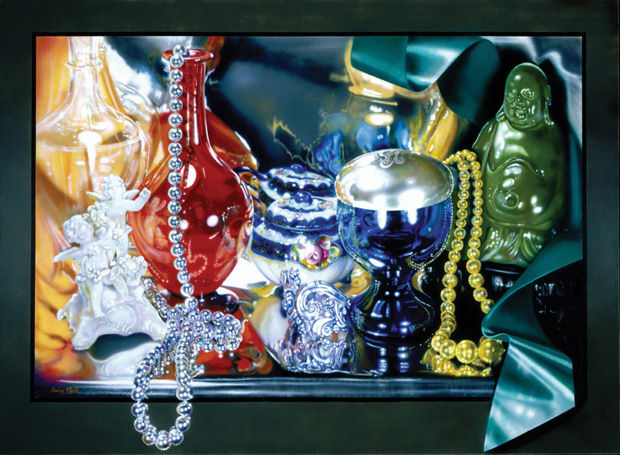Artist inspired by Old Masters in photorealistic works
Published March 9, 2016
“Art makes you think,” pioneer photorealist painter Audrey Flack says. Her comment perfectly describes her work.
Begun in the late 1960s and early 1970s, photorealism is a genre of art in which artists reproduce a photograph in extremely realistic detail using another medium, such as painting.
Flack will discuss her work and career at the upcoming Mary Strauss Women in the Arts lecture titled “Audrey Flack: The Art of Soul” at the St. Louis Art Museum on March 18.
The artist was born in 1931 in New York City and grew up in an immigrant Eastern European Jewish family. The importance of her religion and culture has remained with her throughout her life.
“You shouldn’t disregard who you are,” she said. “My Jewishness and my richly flavored, vital family are in my work.”
Flack attended Cooper Union and then Yale University, where she earned a bachelor of fine Arts degree in 1952. She then studied anatomy at the Art Students League in New York. Flack was an Abstract Expressionist in the early 1950s but was always attracted to representational painting that features familiar objects and human figures.
“Something in me wanted to paint realistically, like the Old Masters, and photorealism was a natural development for me out of abstract expressionism,” she said.
In the early stages of photorealism, artists began to incorporate figures into their work. At first, the figures were abstracted; they became more and more representational as time passed.
Although she was aware of her Jewish identity, she never thought of herself as a Jewish artist.
“Only years later did I become aware of the fact that I was the only Jew and the only woman in the original group of photorealist painters,” she said. “Photorealism was being described as cool, indifferent, quiet, and unemotional. I’m anything but that, and I think I was judged because of it.”
The art critic Hilton Kramer referred to her as “the Barbra Streisand of photorealism” in The New York Times in May 1976. He wrote that before most people even knew of any of Flack’s Jewish-themed works.
“Hilton was Jewish,” Flack said. “It’s interesting how this judgment seeps into the subtle depths of perception. I was never a Jewish artist until I was labeled as such. I was just an artist.”
In the mid-1970s, Flack created perhaps her most famous paintings: “Marilyn” and “World War II.” Part of her Vanitas series, Flack created each painting by arranging objects in her studio, photographing the composition, and reproducing the photograph on canvas with paint and airbrush.
“Marilyn” is oil over acrylic and has bright, luscious colors. Flack assembled a still-life of items including flowers, fruit and three black-and-white photographs: two of a young smiling Marilyn Monroe before life in Hollywood caught up with her, and the third a portrait of Flack and her brother as children.
Flack comments on the ephemeral nature of life through the images of overripe fruit, an overturned hourglass and a burning candle. Though the painting portrays contemporary objects, it references 17th century European memento mori (reminder of death) paintings of fruit and flowers.
“The theme of vanitas is important,” Flack said. “It’s good to live your life well because you’re aware that you’re going to die. Living to be a better human being is part of Jewish culture.”
Flack brings together the varied themes of life, death and Jewish culture in “World War II,” a provocative piece that can be difficult to view. Similar to “Marilyn,” this piece includes a black-and-white photograph amid a colorful array of objects, each with its own symbolic message. The artist reproduced LIFE magazine photographer Margaret Bourke-White’s famous photograph of the liberation of Buchenwald in which emaciated and uncomprehending male inmates stare out from behind barbed wire. Items on the table with the photograph include a red, burning candle dripping with wax, which can represent bloodshed or a yahrzeit candle; an oxidized pear half, which references the impermanence of existence; and a Jewish star pendant.
“I did a lot of research to create this painting,” Flack said. “The Holocaust is very important to me.
Art in its greatest sense can be transformative and healing. Art goes deep into the soul. It deals with mortality and helps us deal with life. We’re all in this together, and we all have only one way out.”
















